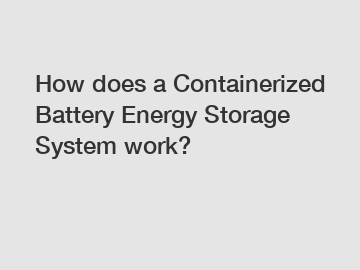Challenges in Lithium Battery Module Pack Assembly Line
The burgeoning demand for electric vehicles (EVs) has propelled the lithium battery industry into the spotlight. Lithium battery module pack assembly lines play a pivotal role in meeting this demand, but they are not without their challenges. In this article, we delve into the most common hurdles faced in the assembly of lithium battery modules.

Precision in Cell Placement
One of the foremost challenges in lithium battery module pack assembly is achieving precision in cell placement. The cells must be arranged meticulously to ensure optimal performance and safety. Even a slight deviation in cell alignment can lead to thermal issues, affecting the battery's overall efficiency and lifespan.
Thermal Management
Thermal management poses a significant challenge in lithium battery assembly. The cells are highly sensitive to temperature fluctuations, and maintaining a uniform temperature distribution across the module is crucial. Inadequate thermal management can result in overheating, leading to performance degradation and safety hazards.
Automation Integration
The need for automation lithium battery assembly is undeniable for efficiency and cost-effectiveness. However, integrating automation seamlessly into the assembly line poses challenges. Programming precision, synchronization of robotic arms, and ensuring error-free communication between different automated components demand meticulous attention to detail.
Quality Control and Testing
Ensuring the quality and reliability of lithium battery modules is paramount. Implementing effective quality control measures and testing protocols is challenging due to the intricate nature of battery components. Detecting defects or potential failures early in the assembly process is crucial to prevent faulty batteries from reaching the market.
Safety Compliance
Safety standards and regulations in the lithium battery industry are stringent. Adhering to these standards while maintaining efficiency is a delicate balance. Meeting safety requirements adds complexity to the assembly process, requiring careful consideration of materials, assembly techniques, and testing procedures.
See also:Radiation Safety
What not to do after Q-switch laser?
Fiber Laser Cutter Top 10 Concerns That You May Have
Scalability
Top 10 Injection Molding Machine Brands
How to Reseal Shrink Wrap Easily
5 Ways to Improve MSW Recycling Efforts
Revolutionizing Transportation: DIY EV Battery Pack Assembly?
As the demand for lithium batteries continues to surge, scalability becomes a pressing concern. Designing an assembly line that can easily adapt to increased production volumes without compromising efficiency is a significant challenge. Balancing flexibility and scalability is crucial for meeting market demands.
Supply Chain Challenges
The global nature of the lithium battery industry makes it susceptible to supply chain disruptions. Sourcing high-quality materials, securing a stable supply of lithium, and navigating geopolitical challenges are ongoing concerns. These factors can impact production timelines and increase costs.
Environmental Sustainability
With the growing emphasis on environmental sustainability, lithium battery manufacturers face the challenge of minimizing their environmental footprint. Proper disposal and recycling of battery components, reducing energy consumption in the manufacturing process, and using sustainable materials are essential aspects that add complexity to the assembly line.
Skill Gap and Training
Operating and maintaining a lithium battery production line requires a skilled workforce. Bridging the skill gap and providing comprehensive training programs are essential for ensuring the smooth operation of the assembly line. The dynamic nature of technology in the industry necessitates continuous learning and adaptation.
Cost Management
While demand for lithium batteries is high, cost management remains a challenge. Balancing the cost of materials, automation equipment, and labor against the market price of lithium batteries requires strategic planning. Efficient cost management is crucial for maintaining competitiveness in the market.
In conclusion, the assembly of lithium battery modules is a complex process that involves addressing various challenges, ranging from precision in cell placement to environmental sustainability. Overcoming these hurdles requires a holistic approach, incorporating advanced technologies, stringent quality control measures, and a skilled workforce. As the industry continues to evolve, tackling these challenges head-on is essential for meeting the growing demand for lithium batteries in the electric vehicle market and beyond.
See also:10 Questions You Should Know about Electroless Nickel Plating Machine
What are the Key Questions to Ask When Ordering Waste Sorting Machine Price?
Revolutionizing Plating in Myanmar: Everything You Need to Know About Plating Machines
10 Questions You Should Know about Plastic Wrap Machine
How Does SEO Optimization Work?
What is the best barrel plating equipment for Iran?
Key Questions to Ask When Ordering Shrink Wrap Machinery
- Previous: Details, Advantages and Applications of Heavy-duty Lathe
- Next: None






![Key Questions to Ask When Ordering [Product/Service]" - MBT Waste Treatment Edition Key Questions to Ask When Ordering [Product/Service]" - MBT Waste Treatment Edition](https://images.techoeidm.com/upload/automate/20240709/2b4ffcb8ebe3fbd8b30eb1aa1d54ef37.png)


